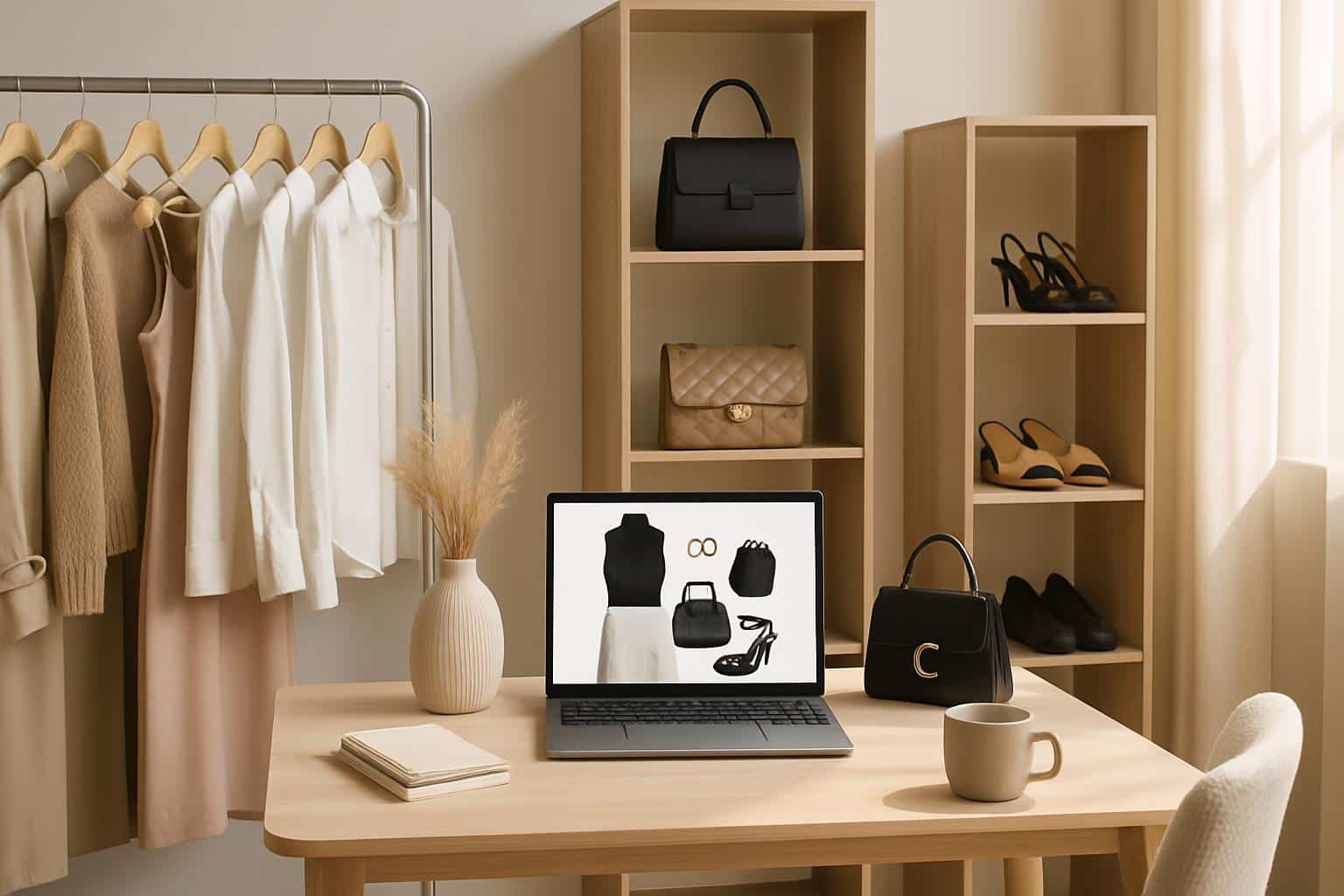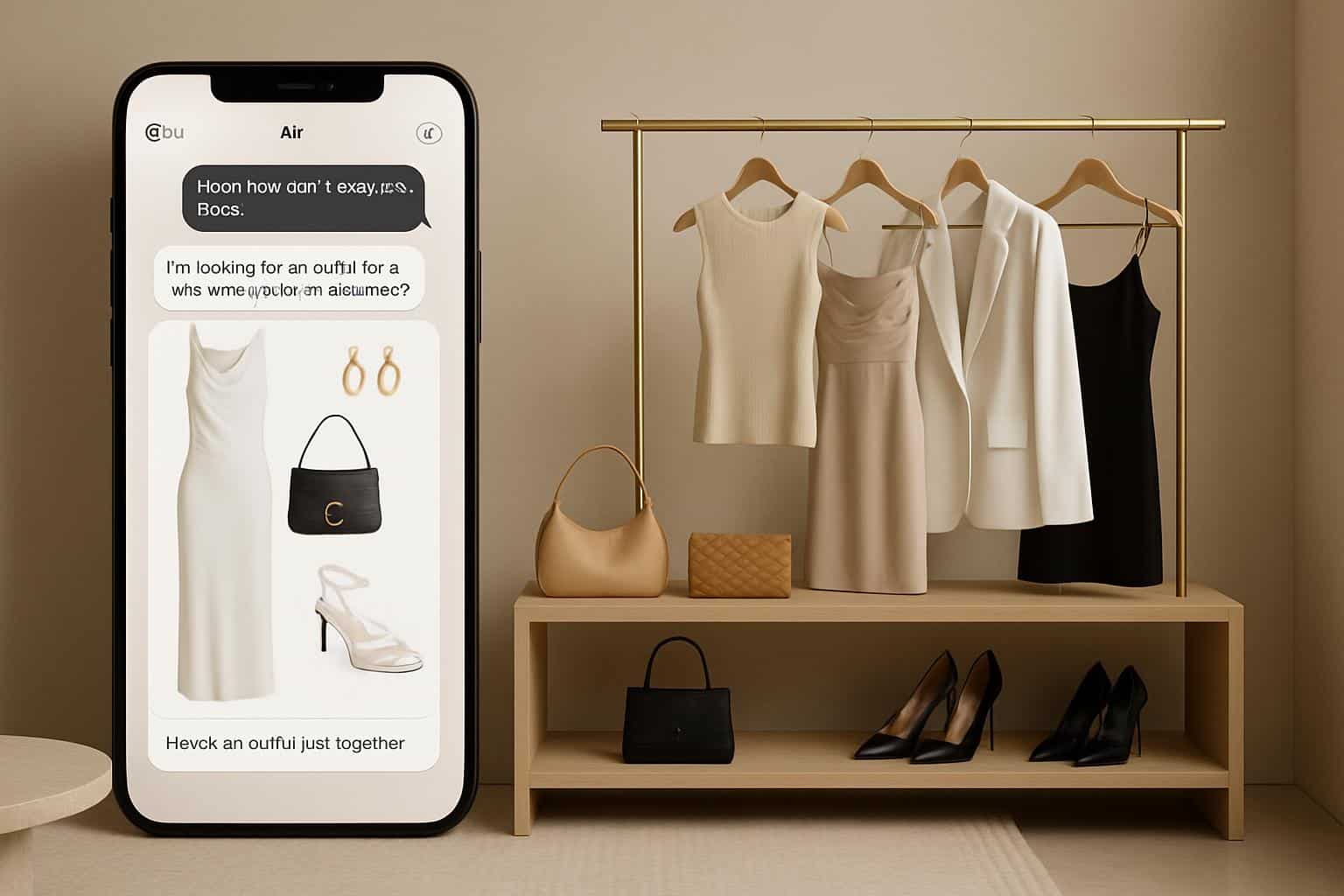Three fashion players are teaming up to take digital styling out of the realm of the remote and make it feel more like you’re having a one-on-one with a boutique expert. Vivrelle, the luxury rental membership service, has teamed up with Revolve and FWRD to debut Ella, a conversational AI stylist that dials looks from head-to-toe found by searching inventory across all three’s catalogs — and funnels it all through one easy checkout on Vivrelle.
How Ella story builds in three catalogs
Ella works like a personal stylist you can chat with. Shoppers can specify the occasion, vibe, budget, sizing parameters and even preferred silhouettes — think “sunset reception on the beach,” “work-to-dinner capsule” or “festival weekend staples.” The assistant draws options from Revolve’s trend-driven stock, FWRD’s stable of designers and Vivrelle’s rental collection (along with the option of pre-owned where it exists), before pulling together a head-to-toe look rounded out with accessories.

Because the service collaborates on three separate assortments, it can strike mix-and-match goals: Rent a statement bag on Vivrelle, purchase a new-season dress from FWRD, and add a wallet-friendly layer via Revolve. Fit and availability are kept in sync in real time, and the purchase or rental lands in a single cart, simplifying a step that often requires shoppers to juggle tabs, logins and shipping windows.
Ella improves as customers engage. Preference signals — the colors you stow away, the fabrics you skip over, how much of a heel you’re willing to tolerate, how often you repeat categories — further refine future suggestions. The goal is to condense that unwieldy “scroll-and-scrutinize” phase down to a couple of natural language prompts and a concise list of confident picks.
The pursuit for AI-powered personalization: Why retail is ready to play the game
Fashion has been chasing the holy grail of personal styling for decades. What’s new is the capability to merge large language models with granular catalog data and customer context. In fact, McKinsey’s Next in Personalization research found that successful personalization can lift revenues by 10-15% for moderate to high potentials and can significantly lift the revenue of leaders. The same report also revealed that a clear majority of consumers now anticipate custom experiences and even become aggravated when a company fails to deliver.
There’s also a returns angle. Apparel e-commerce has faced a long-standing battle with high return rates — some settling well in the teens — fueled in part by fit and styling disappointment, according to the National Retail Federation and other industry trackers. A stylist who nudges consumers toward better-fitting, occasion-specific selections can reduce bracketing and post-purchase regret, and thus cut reverse logistics costs that can eat away at margins.
Particularly impressive is the cross-retailer approach. By bundling rental and resale or pre-owned and retail into one experience, the customer can gain flexibility — splurge on a forever piece, rent a trend, and fill in the gaps with everyday staples — without the friction of separate carts. This omnichannel mix also generates more data loops, which yield smarter recommendations in the end.

Beyond “complete the look” add‑ons
Vivrelle, Revolve and FWRD had teamed up on a checkout buddy that auto-suggested finishing touches that complemented whatever was already in a basket. Ella takes us right back to the beginning of the story. But instead of reacting to a single item, it inquires about events, budgets and personal style, and then constructs an entire outfit moment — top, bottom, shoes, bag, jewels — matched to that prompt and to the user’s previous preferences.
In practice, that shift matters. Most recommendation engines are optimized for incremental add-ons; a proactive stylist is optimized for), satisfaction of intent. Retail leaders are paying more attention to intent resolution metrics — how often the shopper feels “done” in a single session — because they correlate with repeat purchasing and loyalty.
Under the hood: data, fit logic and privacy
Ella is only as good as the information it has, however, with clean product data and fit signals making a huge difference in efficacy. Details such as fabric flex, rise, heel height, item length and brand size runs are important to match correctly. You can expect the system to mix first-party data (wishlists, past orders, rental frequency) with contextual signals (location, season) to help narrow results. Having clear options to edit or reset preferences will build trust, in addition to making sure you are GDPR and CCPA compliant and that you transparently handle rental versus retail data.
Retailers also have a tendency to add guardrails — like filtering out sold-out sizes or restricting redundantly clashing categories and adhering to budget caps. The strongest implementations surface fast toggles (say, “Swap heels for flats,” “Make it office ready”) so customers can guide your recommendations without rewriting their prompts.
Competitive context and what to watch
In fashion, AI assistants are being put to the test across the board — Zalando circulated a conversational stylist to test outfit discovery tools, Stitch Fix has long betting on algorithmic styling and marketplaces are incorporating AI for search and fit assistants. The point of differentiation here is the tri-brand model and single checkout experience that connects rental, pre-owned, and new into a single journey.
What will be watch key? Conversion Rate on Ella-led Sessions,Average Order Value(Rent & Retail),Repeat Usage, delta in return rate for a.i. styled (vs Other channels) orders. Seasonal use cases — noting seasonality is an assumption — more weddings, more travel, more festivals, a return back-to-office, etc, should tell us where an assistant is most effective in cutting decision friction. If those signals move in the right direction, plans are for a whole lot more multi-retailer alliances to come, and for styling assistants to become not just a novelty nestled in the cart, but the default point of entry.

